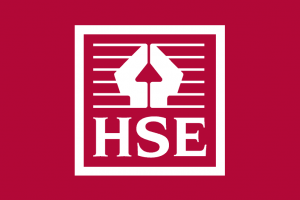Lloyds TSB: How big a risk is UK inflation?

THE persistent overshoot of UK CPI inflation above the government’s 2 per cent target has started to raise concerns that price pressures are becoming entrenched.
In 19 of the past 27 months, annual CPI inflation has exceeded the market consensus expectation, suggesting the models adopted by the economics community have failed to fully capture the current dynamics driving UK inflation or its measurement.
In June, the annual CPI rose by 3.2%, the eighth consecutive month it has been above the 2 per cent target. Other key measures of UK inflation have been similarly strong.
The elevated level of UK inflation stands at odds with price trends elsewhere. In many other developed countries, inflation has either fallen or remained low as spare capacity in the product and labour markets has constrained the pricing power of both employers and employees (as traditional output gap models would suggest), see chart a.
To date, the relatively high inflation outturns in the UK have generally been dismissed as temporary, reflecting the coincidence of various one-off factors that
| Chart a: CPI inflation: UK vs other major economies |
 |
could be expected to wash out of the inflation rate over time. Principal amongst these are the rise in VAT earlier this year, the unusually sharp rise in petrol and secondhand car prices over much of 2009, and the lagged impact of earlier sterling weakness on import prices.
Adjusting for these “temporary” factors, the inflation environment does indeed appear far more benign. Excluding the rise in indirect taxes, for example, annual inflation (measured by CPIY) has declined from 3.1% to just 1.6% over the past year. Furthermore, the composition of UK inflation suggests the rise has been heavily influenced by the increase in transportation costs. Rising transportation costs alone contributed 1.4 percentage points (pp) to annual CPI inflation in June (see chart b). Over time, these “temporary” influences should fade.
| Chart b: Contributions to annual CPI inflation rate in June 2010 |
 |
Nevertheless, it is becoming increasingly difficult to argue that inflation is being driven by these “temporary” influences alone. Although headline inflation has dropped from a peak of 3.7% to 3.2% in recent months, “core” inflation (excluding food and energy) has remained broadly unchanged at around 3%. It is clear that underlying inflation pressures have not eased as sharply as expected given the challenges facing the UK.
The resilience of core CPI inflation, coupled with the recent rise in UK inflation expectations, has begun to raise doubts on the MPC about how quickly inflation will fall back. The 2.5 pp rise in VAT next January only adds to the uncertainty. Notwithstanding this, we expect underlying inflation pressures to moderate over the medium term.
Our latest inflation projections are shown in chart c. Headline CPI inflation is forecast to drop to around 2.6% by the end of the year and to remain around this level through 2011, as the new VAT increase impacts, before dropping back below 2% from early 2012.
| Chart C: Our inflation forecasts |
 |
The annual RPI is also expected to slow sharply. Our RPI forecast builds on our CPI profile, but takes into account the expected profile for house prices and mortgage interest payments. Although we expect the inflation environment to weaken, mortgage interest payments are likely to rise modestly next year as the MPC seeks to reverse some of the insurance easing put in place during the credit crisis. While this should put upward pressure on the RPI, this is likely to be overshadowed by relatively weak house price growth and a general weakening of price pressures elsewhere. As such, we expect RPI to fall towards 2% over the medium term.
* All charts are sourced to
Lloyds TSB Corporate Markets Economic Research, Bloomberg and Thomson Datastream
If any part of your business is exposed to the inflation rate, then please contact Lloyds TSB Corporate Markets to discuss how we may be able to help you to mitigate this risk for your business.
For more information on how we can help your business, please contact:
John Wood
Regional Director
Lloyds TSB Corporate Markets
Telephone: 0113 292 0246
john.wood@lloydsbanking.com
Adam Chester
Head of UK Macroeconomics
Lloyds TSB Corporate Markets
Telephone: 020 7158 1740
adam.chester@lloydsbanking.com
Lloyds TSB Corporate Markets is a trading name of Lloyds TSB Bank plc. Any information is based on sources believed to be reliable, however neither Lloyds TSB Bank plc nor its directors, officers or employees warrant its accuracy, completeness or otherwise, or accept responsibility for any error, omission or other inaccuracy, or for any consequences arising from any reliance upon such information The facts and data contained herein are not, and should under no circumstances be treated as an offer or solicitation to offer, to buy or sell any product, nor are they intended to be a substitute for commercial judgement or professional or legal advice, and you should not act in reliance upon any of the facts and data herein contained without first obtaining professional advice relevant to your circumstances. Expressions of opinion may be subject to change without notice. Although warrants and/or derivative instruments can be utilised for the management of investment risk, some of these products are unsuitable for many investors. The facts and data contained herein are therefore not intended for the use of retail customers (as defined by the FSA Handbook) of Lloyds TSB Bank plc.
Lloyds TSB Bank plc’s registered office is at 25 Gresham Street, London EC2V 7HN and it is registered in England and Wales under no. 2065. Lloyds TSB Bank plc is authorised and regulated by the Financial Services Authority.







